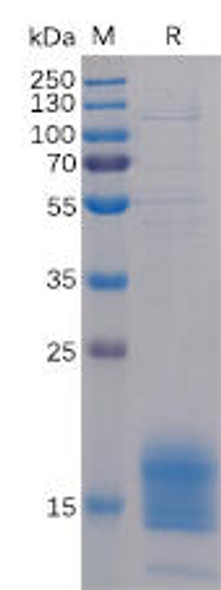| Background: | Neuronal Pentraxin (NPTX2), also called NP2 or NARP (neuronal activity-regulated pentraxin) is a 46-60 kDa secreted glycoprotein within the Pentraxin family. Neuronal pentraxins include NPTX1 and NPTX2, both secreted proteins, and NPTXR (Neuronal Pentraxin Receptor), which is found in type II transmembrane or cleaved, soluble forms. Circulating NPTX2 forms disulfide-linked 250 kDa homopentamers, while at excitatory synapses it can form heteropentamers and larger clusters with NPTX1 and NPTXR. The clusters promote synaptogenesis by recruiting subunits of AMPA-type glutamate receptors (AMPAR). Of the three neuronal pentraxins, only NPTX2 shows immediate-early expression induced by synaptic activity. Human NPTX2 is synthesized as a 431 amino acid (aa) protein with a 15 aa signal sequence and a 416 aa secreted mature protein that contains a calcium binding Pentraxin domain. Mature human NPTX2 shares 96% aa sequence identity with mouse, rat, bovine, and canine NPTX2. Unlike other neuronal pentraxins, NPTX2 expression is not limited to neurons and NPTX2 protein is detected in the plasma. It is prominent in the hippocampus, cerebral cortex, cerebellum, hypothalamus, posterior pituitary, and retina. It is found at excitatory synapses in parvalbumin-expressing interneurons and vasopressin- and orexin-expressing hypothalamic neurons. Its expression is increased in the substantia nigra in Parkinson’s disease, and it is present in Lewy bodies. NPTX2 shows calcium-dependent adhesion. It promotes axon outgrowth in cortical explants, and formation, maturation and plasticity of synapses in vivo. |






